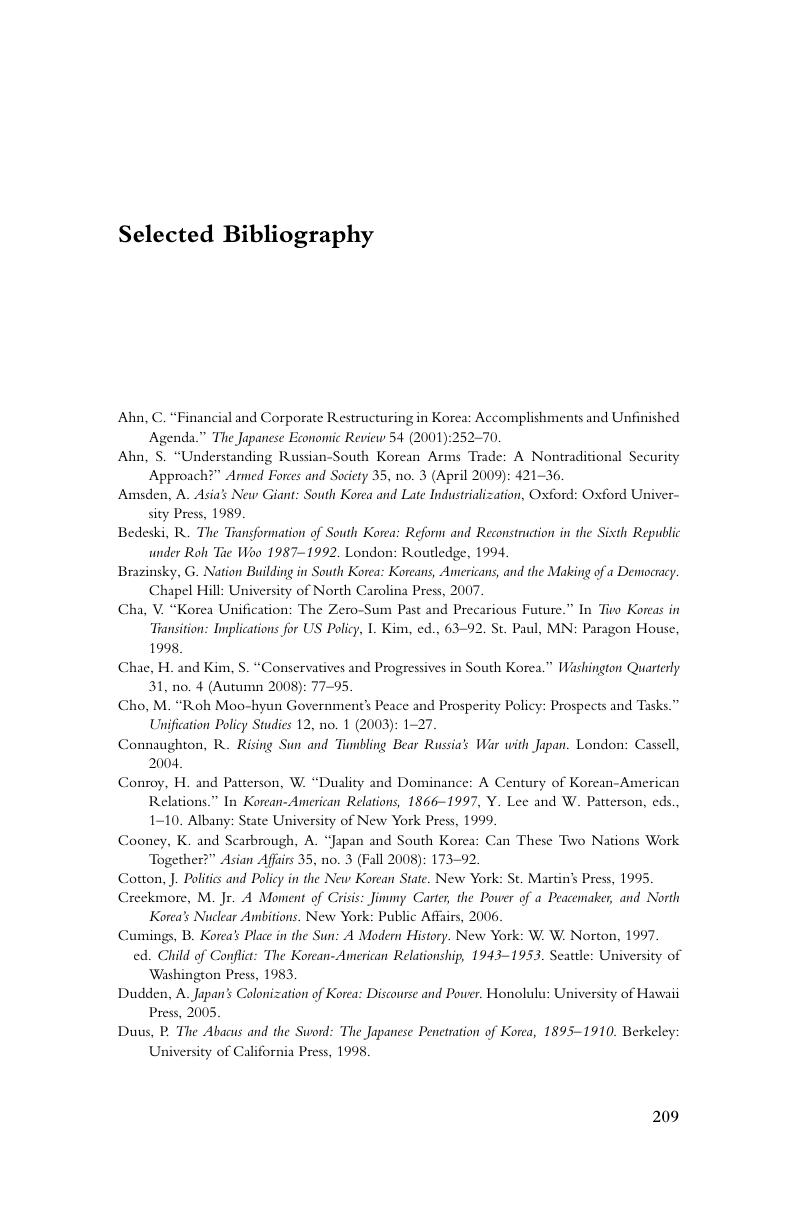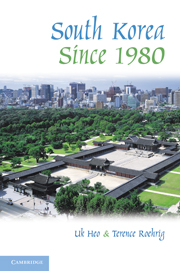Book contents
- Frontmatter
- Contents
- Dedication
- 1 Politics, Economics, and Foreign Relations before 1980
- 2 From Dictatorship to Democracy
- 3 Democratic Consolidation and Social Change
- 4 Economic Development and Financial Crisis
- 5 Economic Reform and the Korea–U.S. Free Trade Agreement
- 6 Inter-Korean Relations and the North Korean Nuclear Crisis
- 7 The South Korea–U.S. Alliance
- 8 South Korea and the Regional Powers
- Selected Bibliography
- Index
- References
Selected Bibliography
Published online by Cambridge University Press: 05 June 2012
- Frontmatter
- Contents
- Dedication
- 1 Politics, Economics, and Foreign Relations before 1980
- 2 From Dictatorship to Democracy
- 3 Democratic Consolidation and Social Change
- 4 Economic Development and Financial Crisis
- 5 Economic Reform and the Korea–U.S. Free Trade Agreement
- 6 Inter-Korean Relations and the North Korean Nuclear Crisis
- 7 The South Korea–U.S. Alliance
- 8 South Korea and the Regional Powers
- Selected Bibliography
- Index
- References
Summary

- Type
- Chapter
- Information
- South Korea since 1980 , pp. 209 - 212Publisher: Cambridge University PressPrint publication year: 2010



